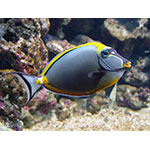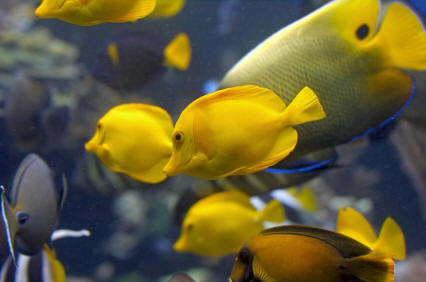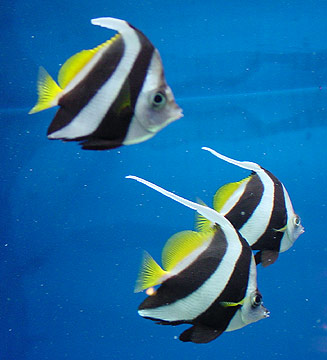Lipstick Tang

|
Scientific Name: Nasso lituratus Price: Upon Request Origin: Fiji, Hawaii, Indonesia, Sri Lanka, Vanuatu Family: Acanthuridae NOT AVAILABLE NOW |
|
Other Names: Naso Tang, Orangespine Unicornfish, Pacific Orangespine Unicornfish, Clown Surgeonfish, Liturate Surgeonfish |
|
Technical Info
Temperature: 22 - 26 ℃
pH: 8.1 - 8.4
GH: 8 - 12
SG: 1.020 - 1.025
Max size: 45 cm
Min Tank size: 500 Ltr
Position in Aqua: Top swimmer
Description
As a juvenile, the Lipstick Tang from Hawaii is dark gray with a blue stripe following along the dorsal fin and an orange stripe in the anal fin. When matured, the body takes on a reddish-brown tone and the juvenile striping is supplemented with additional color. The tail takes on a lyre shape with a yellow vertical bar towards the back. Two orange patches appear at the peduncle spines near the tail. The face undergoes the largest change. A thin, black mask forms between the eyes and mouth. The mask is outlined with bright yellow and the lips develop a reddish-orange color.
Food
Although Tangs will eat meaty foods along with the other fish in the aquarium, it is important that they are offered plenty of marine based seaweed and algae. This will strengthen their immune system, reduce aggression and improve their overall health.
Breeding
Lipstick Tang has not yet been bred in captivity, they have been observed pair spawning in the ocean. A pair will rise to the surface to release their gametes. The eggs are pelagic with an extended larval phase, which probably accounts for the vast distribution of the Unicornfish.
Compatible with
Only one Lipstick Tang per tank is recommend. They may act aggressively towards other species of tangs, so they are best kept as the only tang species in the tank as well. Suitable tank mates include Angelfish, Damsels, Rabbitfish and Wrasses.
Note
This is a fish that once adjusted to aquarium life has great personality. It can be trained to eat food right out of your hands. It is one of the more aggressive Surgeonfish species when it comes to territorial disputes with other Surgeonfishes, especially of its own kind, but generally will get along with other fish tank mates and invertebrates. It is an interesting trait that they will attack each other, considering that they do congregate in small groups or schools in the wild.

